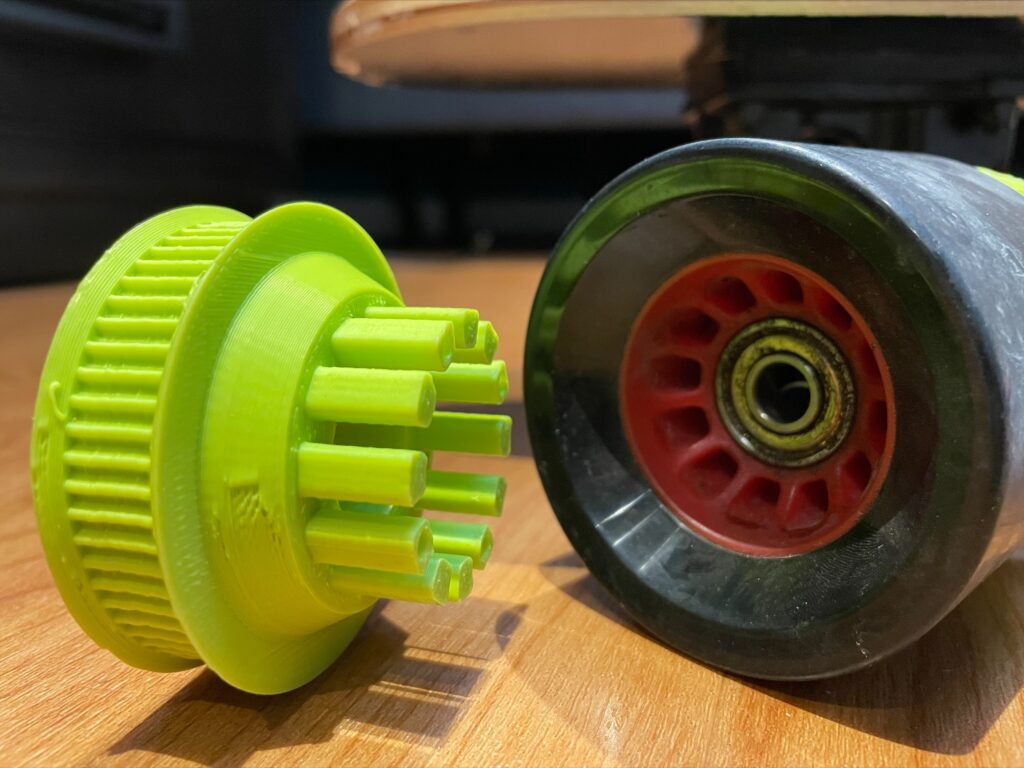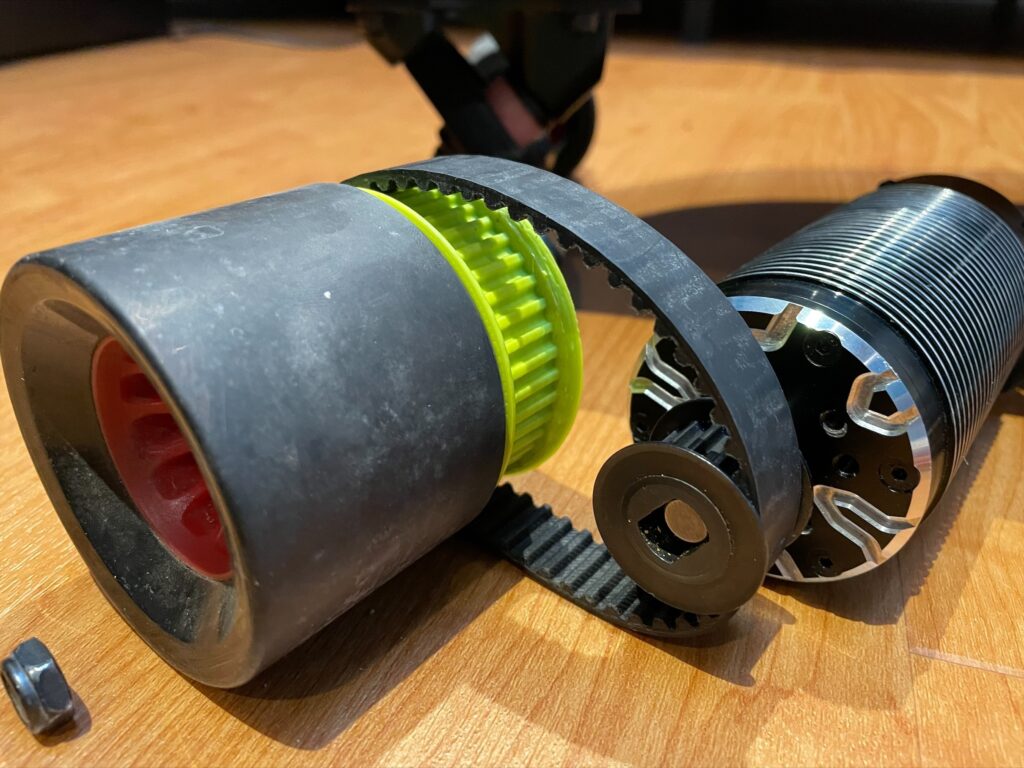During my senior year in high school, I took a capstone project class. In this class, we selected a topic that we wanted to pursue and research. I chose to design and create my own electric longboard. This project is of interest to me because it will give me the opportunity to learn more about the various types of motors and batteries, as well as general electronics. I employed advanced techniques in both CAD software and programming to ensure the skateboard works as planned. This project showcases my creative ability and knowledge of design and engineering while also providing me with a reason to learn how to longboard.
Initial research and brainstorming:
I have conducted extensive research and prototyping for the E-board. I have decided to use a longboard for maximized stability while riding. I am utilizing a motor and battery setup that I was able to acquire easily for the initial proof of concept and first prototype. After successfully getting the prototype to work, my plan is to purchase the ideal motor, battery, and ESC setup based on the calculations I have performed for my desired top speed and runtime. The main components I need to fabricate for the E-board include the pulley hub mount, motor mounting plate, and battery case.
Wheel Hub
The first component I created was the pulley hub mount. This piece enables the normal coasting of a longboard wheel to be connected to a pulley, thus allowing it to be powered acting to propel the board. I chose to power only a single wheel for the sake of simplicity, as it would not impact how the board moves due to the short track or distance between the two rear wheels.
Process: I began by taking measurements of the inner rim of the wheel, which allowed me to create posts on the hub that can slide firmly into the wheel, effectively locking the two components together as one piece. Using those measurements, I developed a CAD model of the part. Additionally, I obtained the specifications of the pulley I intended to use and imported the same dimensions to generate a 3D model of the pulley wheel. This 3D model was attached to the posts that would connect with the longboard wheel.
The final step in the design process was to create four holes that would pass through the entire part. This enabled me to drill matching holes into the wheel itself, allowing four long screws to go through both the wheel and the hub, securely holding the two parts together. After completing the CAD design, I proceeded to 3D print the part and then tested how they fit together.
Motor Mount Plates
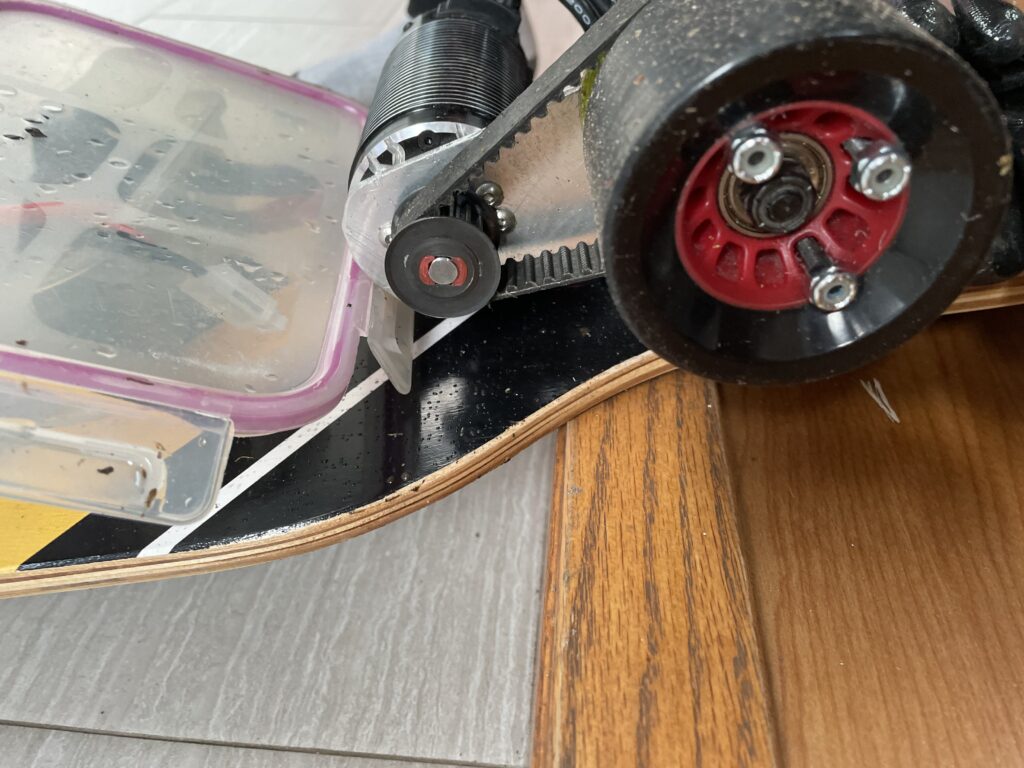
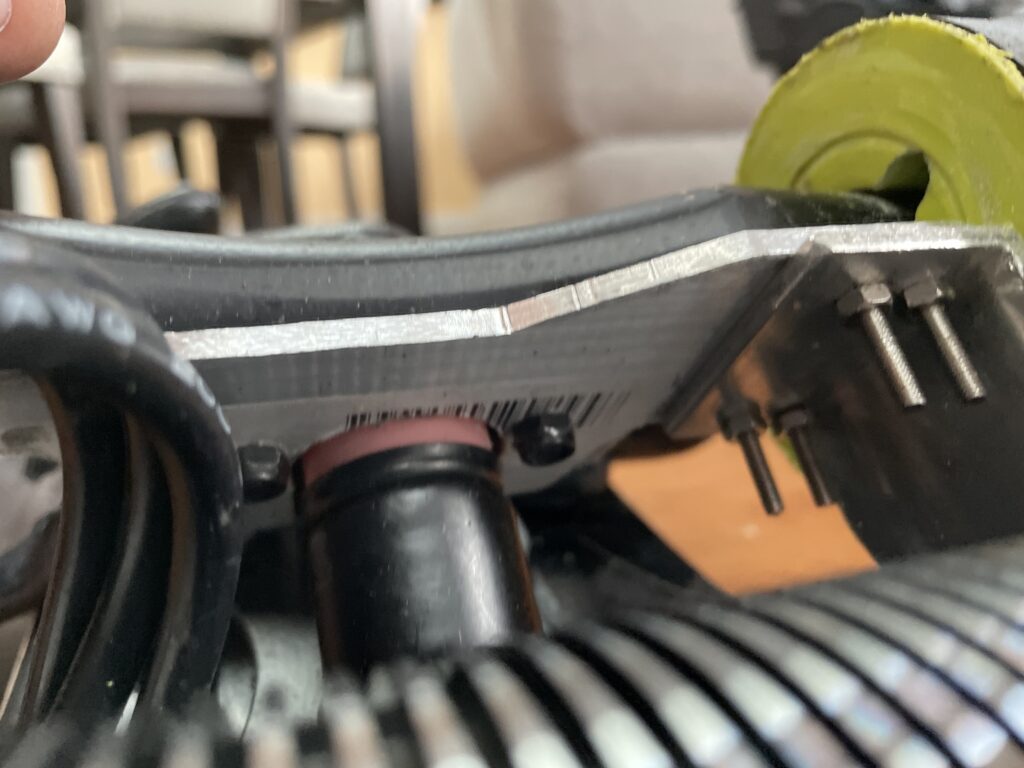
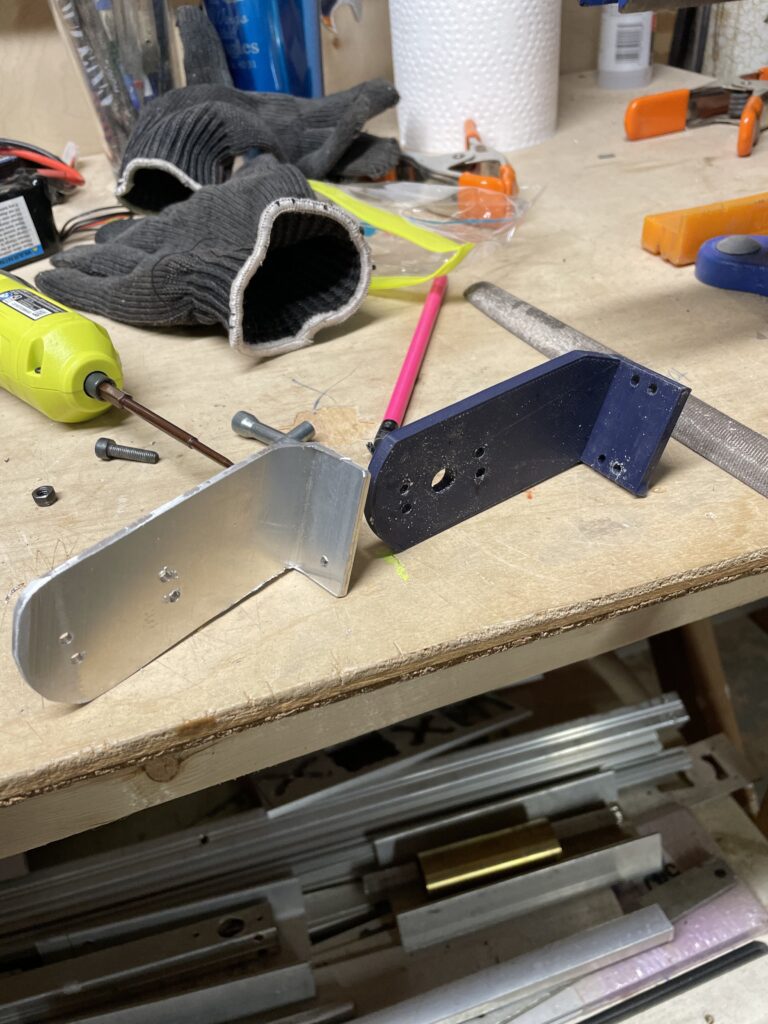
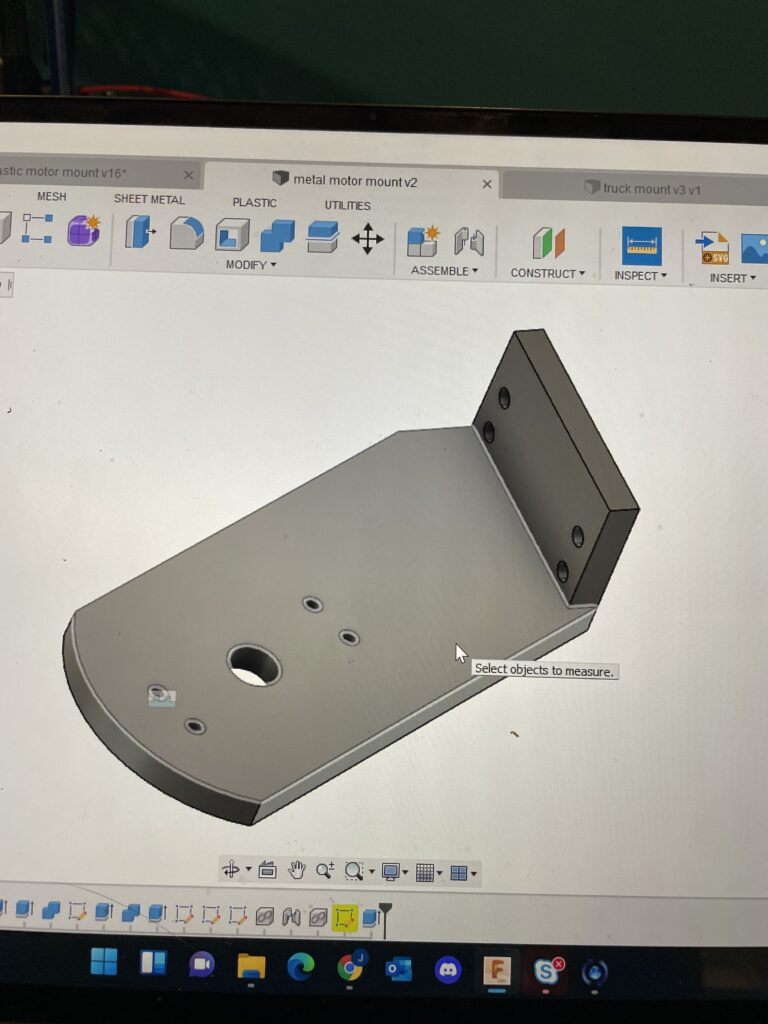
The second component I created was the motor mounting plates. The longboard has two trucks (where the wheels are mounted) made of steel, which move with the wheels, while the wooden board moves separately during turns. This distinction is important because when mounting the motor, it must always be relative to the wheel. This is necessary because the pulley distance needs to remain constant. Therefore, the only suitable location for mounting the motor is onto the trucks of the longboard. These trucks were not initially designed to have anything attached to them. As a result, I designed two custom plates: one to provide a flat and sturdy surface on the truck and another to offset the plate by 90 degrees, creating mounting points for the motor.
Process: To create the first plate, I took measurements of the truck and analyzed the optimal locations for mounting screws. After completing this step, I designed a plate that conformed to the shape of the truck based on my measurements. I then incorporated holes for mounting into both the truck and the other motor mounting plate. I transferred this design into the Mach 3 software, which was compatible with the Omnio X8-220L CNC machine I had access to. Using this software, I proceeded to cut the piece out.
For the second plate, I measured the required distance the motor would need to be positioned to accommodate the pulley size I was using. Additionally, I determined the angle at which the part needed to be offset from the truck to avoid contact with the wooden board during turns. After designing the part in CAD and adding all the necessary mounting holes, I printed a 2D model of my design on paper. This paper model was then affixed to the piece of C-channel I was cutting the part from. Using a bandsaw, I cut out the part while following my paper guide. I couldn’t utilize the CNC machine for this particular part since the bit mount of the CNC machine would collide with the raised sides of the C-channel.
After both parts were cut and refined, I proceeded to install them along with the motor and pulley onto the board.
Electronics Box
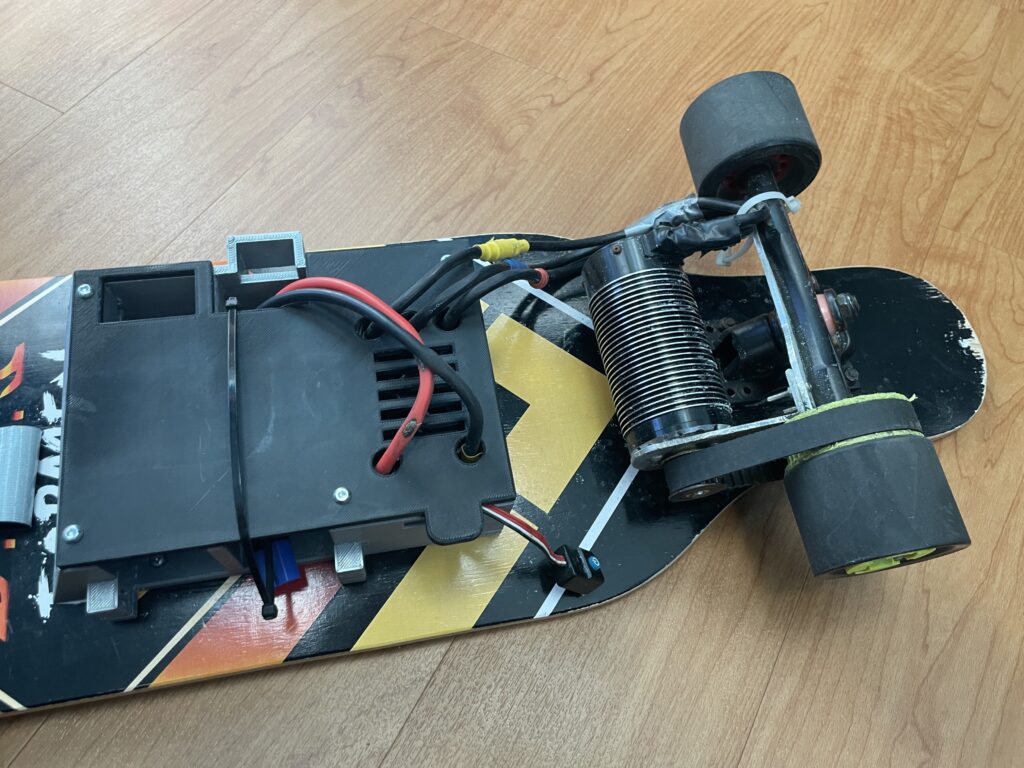

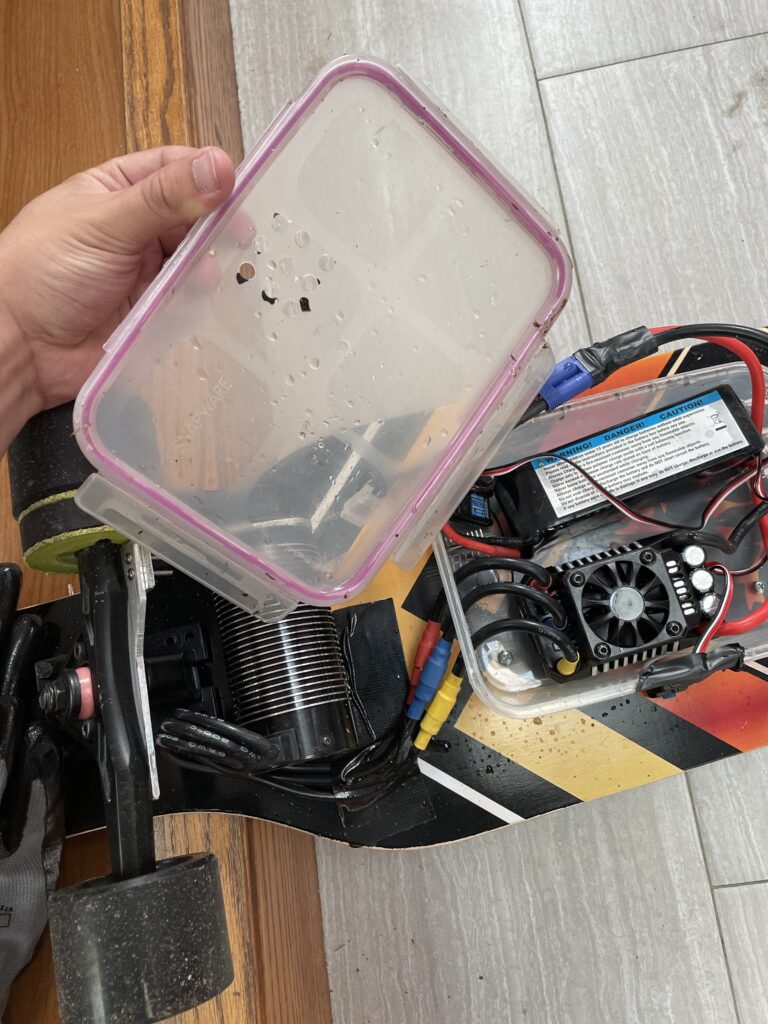
The third component of the longboard was the electronics and the case in which they would be housed. I conducted basic calculations, drawing solely from my knowledge of Physics 1 (which I was studying at the time), to estimate the load the motor would experience. This was essential for finding electronics suitable for the task. The electronics I utilized are the same as those found in a remote control car, comprising an electronic speed controller (ESC), receiver, remote, and batteries. All these components required a case that could shield them from the environmental conditions the board would encounter during use.
Another crucial insight obtained during testing was the necessity for the case to possess effective ventilation. This was to ensure that the electronics wouldn’t overheat when subjected to high loads.
Process: Initially, I aimed to test all my electronics before crafting a custom case to accommodate them. Thus, I opted to prototype a case using a plastic storage bin. I affixed the bin to the board using screws and drilled holes for the wires to exit. With the electronics placed inside, I sealed the lid, and I was prepared for testing. After multiple successful tests, I concluded that the chosen electronics were suitable for the task. Subsequently, I turned to CAD to design a case that would more appropriately house the components.
In the case design, I incorporated specific compartments for two batteries, a receiver, and an ESC. Additionally, I included a designated area for a voltage reader, complete with a visibility slot for easy runtime monitoring. After integrating holes for ventilation, wires, and mounting, I produced a 3D printed version of my design. Following the mounting and testing phase, it became evident that the case securely housed the components, marking the completion of my electronic longboard.

